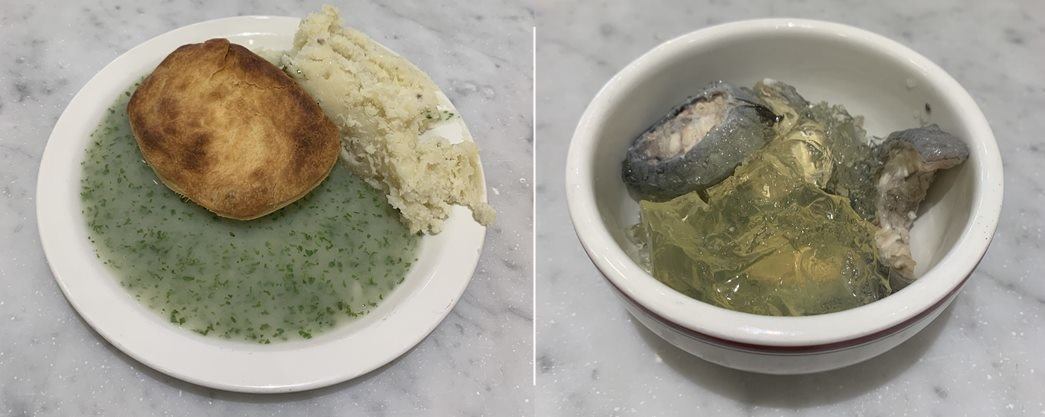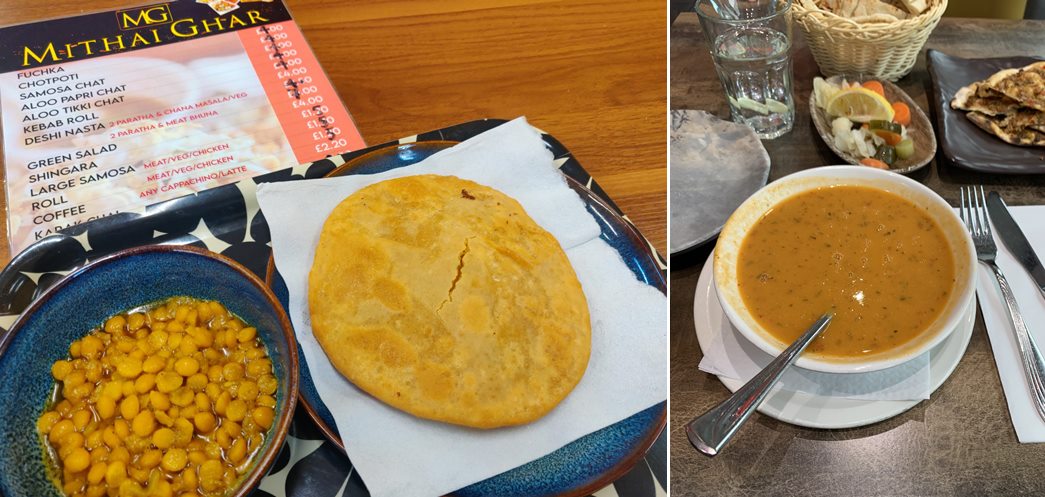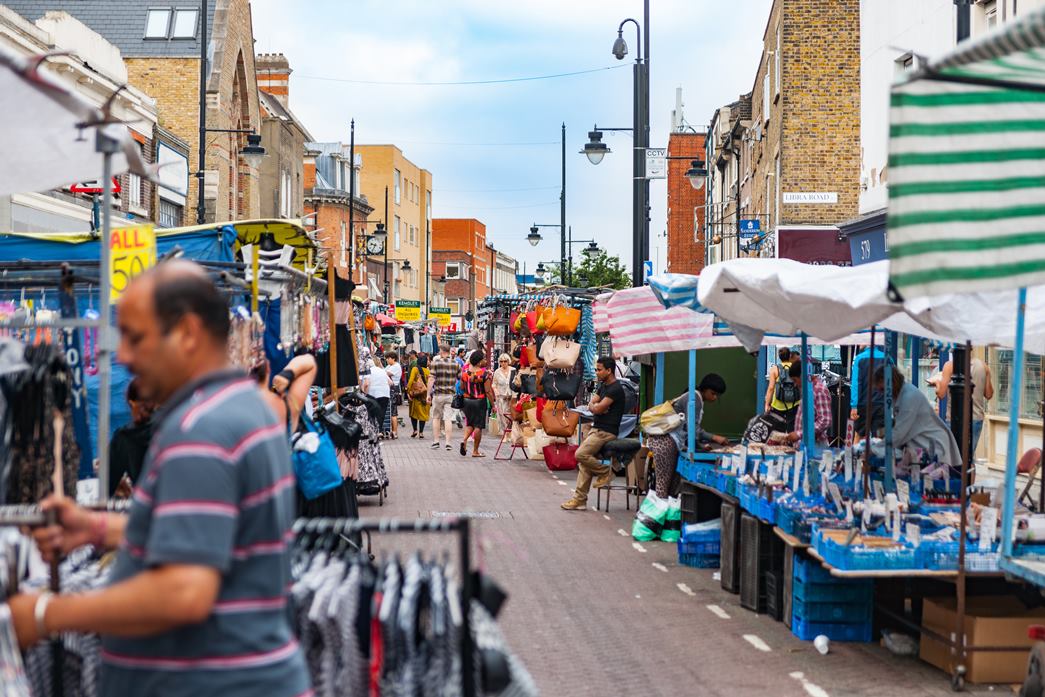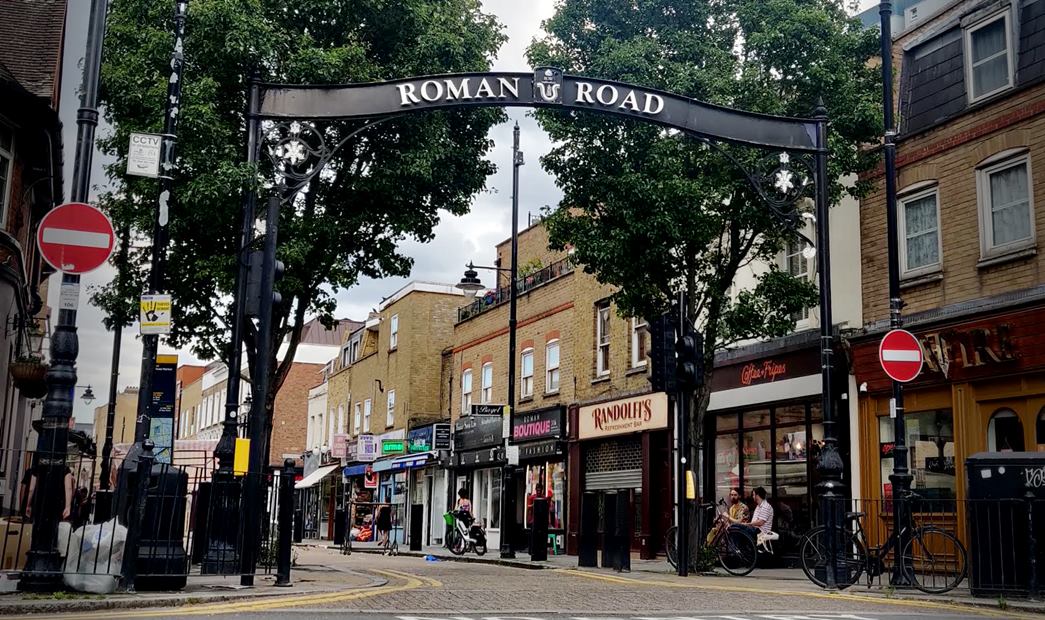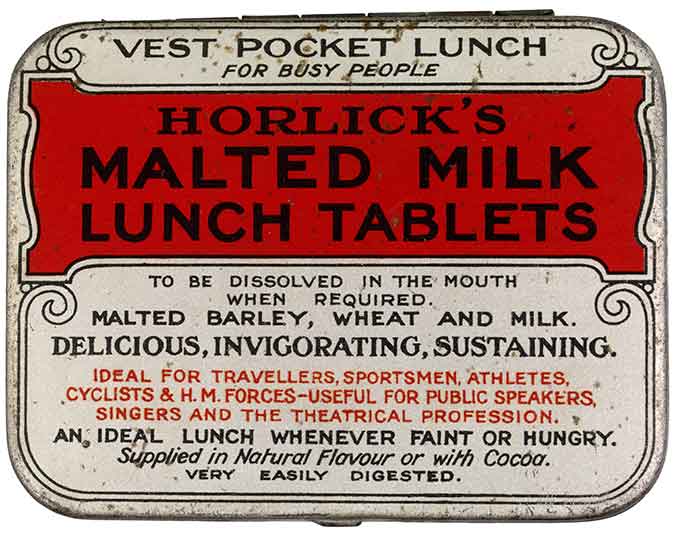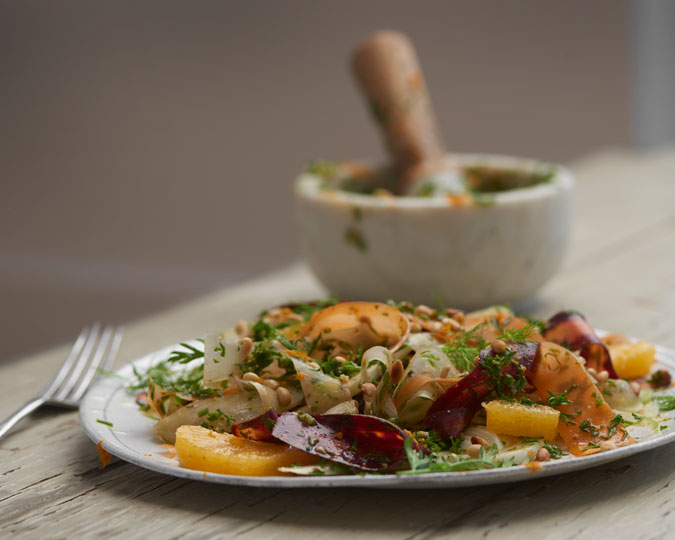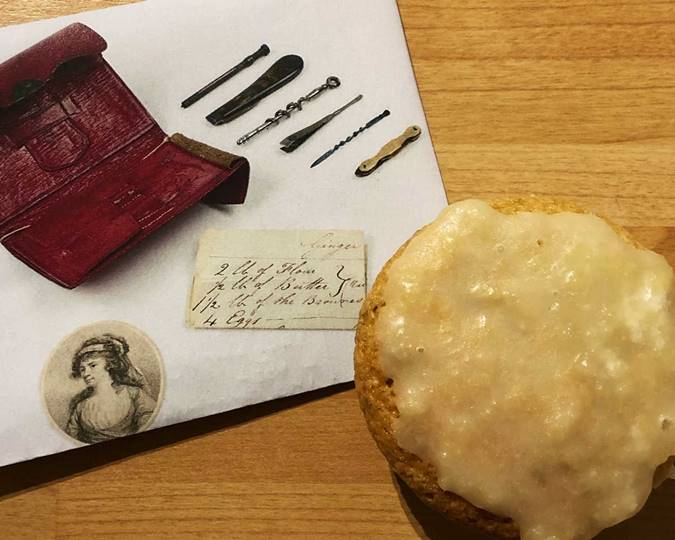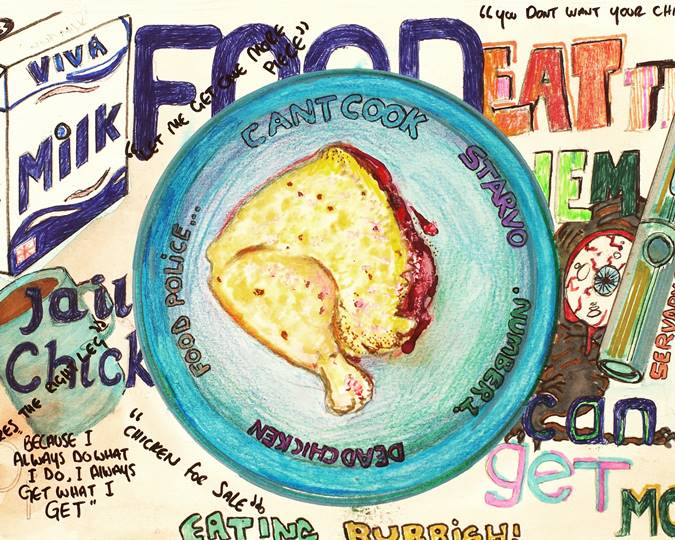Roman Road in Bow is a microcosm of the East End’s evolving food culture, where pie, mash and jellied eels coexist with biryani, dal puri and more. We look at how Roman Road is a breeding ground for the constant reinvention that makes London special.
We know from ancient DNA analysis that Roman London was a diverse place, with inhabitants who ate local food, along with imports like figs, walnuts and grapes. Over a millennium later, Londoners who survived the Black Death ate a lot of pottage, a type of thick stew. If you were around during Charles Dickens’ day, you may have enjoyed “husky chips of potato, fried with some reluctant drops of oil”, as he so evocatively describes them in A Tale of Two Cities.
Like the capital itself, London’s food is built on layers of history. Those food traditions contain multitudes, not only because the city continues to swallow up its own outskirts, but also because so many foreigners have subsequently called it home. So, making sense of London’s shapeshifting food identity is a fool’s errand. The only way in is through a part that represents the whole.
The East End: a history of diversity
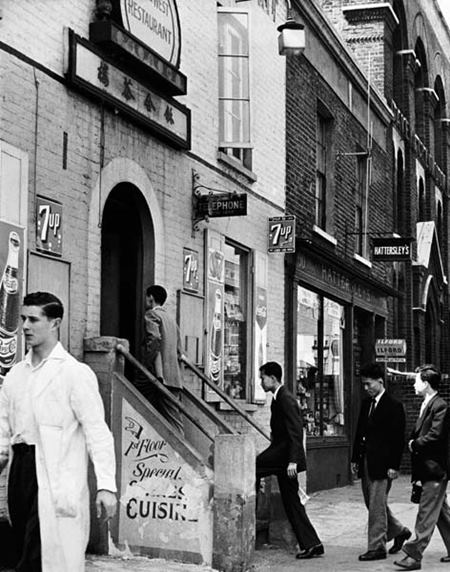
East & West Chinese Restaurant, Limehouse, 1955
(©Henry Grant Collection/Museum of London)
The East End is a good candidate, since it’s amorphous too. The area has long been a London unto itself, set apart from the rest, and shaped by the docks and factories that once characterised its daily life. But today the East End only bears traces of the food that fuelled its past. While you can still find braided challah in Whitechapel, its Jewish populace moved away a long time ago. Although Limehouse's Chinatown has since vanished, its spirit now lives on in a takeaway in Plaistow.
To catch a glimpse of East End food today, it’s worth zooming in further still, to one of its most singular streets: Roman Road in Bow. Along with its Victorian market, traditional East End customs persist here, such as eating chunks of a snake-like fish encased in its own congealed stock. But locals eat fewer eels now, partly because the makeup of the area has changed. In the 2021 census, 40% of the people who live in the constituency Roman Road occupies, Bethnal Green and Bow, said they were Bangladeshi, Indian or Pakistani.
A nation of sandwich lovers
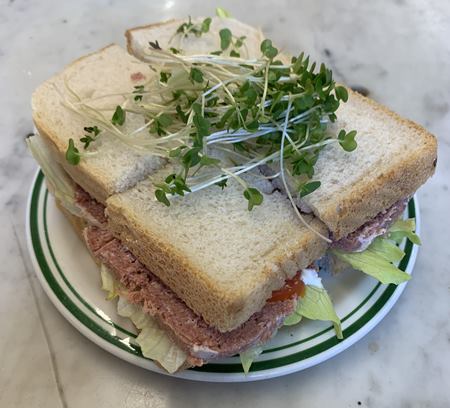
A typical sandwich at Randolfi’s
(Courtesy: Isaac Rangaswami)
My favourite place to eat around here is Randolfi’s, an Italian sandwich bar that opened before World War I and later shuffled up the street to its current premises. At Randolfi’s, a meal is something between two slices of bread. By the counter, several letter board menus showcase a range of antiquated sandwich options, like sardine, corned beef and liver sausage, which all come sliced into quarters and garnished with cress.
One reason Randolfi’s has stayed relevant for so long is that British people still like to eat sandwiches, especially during lunch breaks. But unlike the pre-packaged ones at Tesco Express down the road, the sandwiches at Randolfi’s are made fresh. Importantly, they are also served in an airy, peach-walled dining room, lined with houseplants and expressive portraits. At Randolfi’s, you can sit in the place’s elegant bistro chairs for as long as you like.
Pie, mash and eels
The cheap, straightforward lunchtime food at Randolfi’s has much in common with a more distinctively East End dish, available at Roman Road’s 84-year-old pie and mash shop, G Kelly. As with other shops like it, G Kelly’s pies are flaky-topped, with a soft underbelly and a minced meat filling. You eat the thing with mashed potato and a puddle of pale green parsley sauce, just like the Victorians did. You season it yourself, with salt, pepper and a litre of vinegar.
I didn’t grow up eating this food, so I learned its lore as an outsider. It took me ages to notice that everyone else tore into their pastry with spoons rather than knives, but I’ve never felt the need to do so myself. I only figured out what a “double double” was after eavesdropping on other customers and noticing they had twice the portion on their plates. I have no issue with jellied eels, but I still haven’t figured out how to avoid swallowing their little bones too.
While I have no license to feel pie and mash shop nostalgia myself, I see why other people do. Pie, mash and eels are living history, in that their ingredients were readily available in the Victorian city, while allowing its workers to eat with a roof above their heads. These places preserve a mostly lost London I find pretty. But, as James Hansen writes, by pushing these proto-restaurants to the margins, “the world at large perceives [pie and mash] shops as heritage items, not the community spaces that they are.”
G Kelly is one such space, which remains well-used by shoppers, working people and tourists alike. Part of the place’s staying power may be down to its sensitive refurbishment, which rejuvenated its timeworn interior and added a disabled loo. It’s also open every day of the week and even for special late openings when West Ham plays at home. Rather than fading away, G Kelly has had a second life. That’s because it’s become easier to visit, whether you’re looking to reminisce, try a native London dish or simply eat.
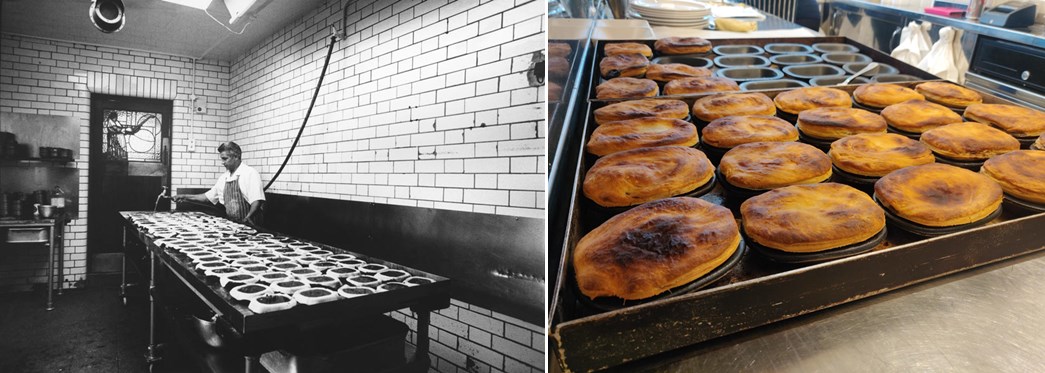
The pie and mash tradition continues
Pies being prepared at F. Cooke’s eel and pie shop, Dalston, in 1991. Now closed. (©Chris Clunn), and pies at the counter of G Kelly, Roman Road, 2023.
The capital has more pie and mash shops left than people think — at least 30 within the M25 by my count. G Kelly and other spots like it still provide joy, shelter and sustenance for many, but the reality is East London’s association with this food is increasingly outdated. Tastes changed a while back, as did the old neighbourhoods, while the cockneys moved further east. As Jonathan Nunn writes, “pie and mash is not dying; it has tactically retreated.”
Pie and mash isn’t the cheapest food on Roman Road anymore either, through no fault of its own. As with chip shops, one of its key ingredients doubled in cost in 2023, while these historical restaurants face the same pressures as every other hospitality business, from staff shortages to energy bills. Today, one pie and one mash from G Kelly costs £4.40. Just up the road, at a café called Bismillah Food Corner, you can eat a range of simple, reheated biryanis for £2.50.
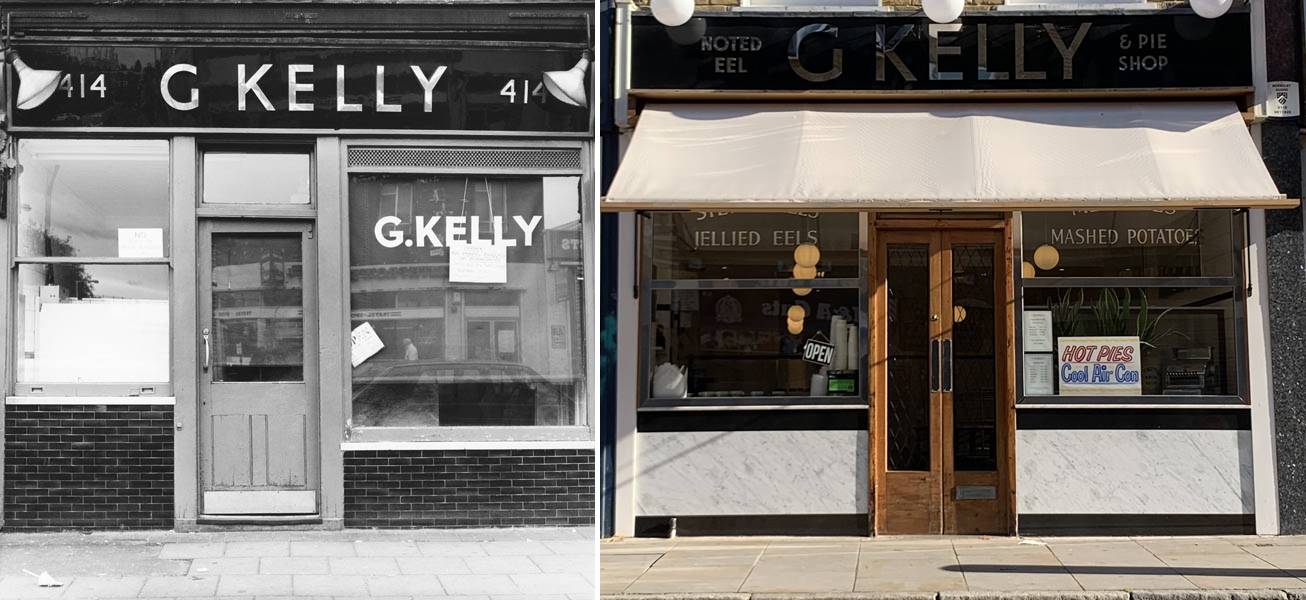
‘Joy, shelter and sustenance’
(left) G Kelly’s Bethnal Green shop from 1991, now closed (©Chris Clunn), and (right) a refurbished G Kelly on Roman Road, 2023. (Courtesy: Isaac Rangaswami)
Pie and mash's successors
A few doors down from Bismillah you’ll find Mithai Ghar, a similarly inexpensive sweet shop and café, whose Bangladeshi proprietors told me they opened less than six months ago. A variety of chaats, desserts and other small meals are available here, such as dal puri, which costs £1.50. But spots like Mithai Ghar aren’t just cheap, they fulfil the same de facto community function as the heritage restaurants that preceded them, by feeding people who work and live nearby.
People from the area that became Bangladesh have been coming to Britain for over a century, with major waves of migration in the wake of the Partition of India in 1947 and Bangladesh’s war of independence in 1971. Many of these migrants settled in the East End, where they had existing networks and the promise of factory, textiles and restaurant work. Along with curry houses adapted to British tastes, the new residents of neighbourhoods like Bow, Spitalfields and Whitechapel opened up places to feed themselves too. Like their precursors, these restaurants offer somewhere to sit down for a while, along with affordable sources of delight, such as shingaras, those plump Bengali samosas, and rasgullas, those syrupy balls of squeaky cheese.
Roman Road could be a ghost town, without any of these spaces, like so many of Britain’s ailing high streets. Yet it still functions as a local economy, providing a home for independent businesses of every stripe. Along with Randolfi’s and G Kelly, the road has sustained an enduring chip shop, Saucy Kipper Fish Bar, at a time when such businesses are rapidly disappearing. Overall, Roman Road still has a discernible local character. Maybe that’s because Bow remains slightly isolated, surrounded on all sides by the historic waterways that snake up from Limehouse and Leamouth.
“Any area that’s lived outside of accepted society is one that has kept its identity,” says Tabitha Stapely, who has seen the area change slowly after living here for 25 years and editing Roman Road LDN. She adds that Roman Road has over 400 businesses, an amount made possible by their generally small size. “To this day, the size of them means that they’re more affordable in terms of commercial rates,” Stapely tells me.
This unique commercial environment means Roman Road has room for both heritage spots and newer arrivals. On a rainy Tuesday evening, I found Sultan Sofrasi, one of the area’s glossy Turkish restaurants, packed with people celebrating birthdays over mountains of grilled meat. A number of Roman Road's similarly polished, brunchier spots were started by people with local roots, more proof that developers alter the character of neighbourhood rather than superficial markers of taste. Mustafa Has, co-owner of Cafe East, grew up on the Crossways Estate. Natasha Mae Sayliss, owner of Mae + Harvey, is from Wanstead. “A few of the guys that work here grew up on the Roman,” Natasha tells me.
Roman Road will continue to change, because it’s a breeding ground for the constant reinvention that makes London special. But people still remember the old days, like Mark Gould, an East End native who left his job as a journalist to make furniture in a railway arch. Mark used to go to the original, pre-war Randolfi’s, before it moved in 2008. “It was covered in 7,000 layers of paint,” he says, before describing how the place got hit by a lorry. I never experienced the old Randolfi’s myself, but recently I noticed something heart-warming on the window of its new premises: a translation of its menu, in Bengali.
Isaac Rangaswami is a writer based in London. He runs the Instagram account @caffs_not_cafes.
Header image: The Roman Road market as photographed in 1968. (Image courtesy of Tower Hamlets Local History Library & Archives, Reference: P21406)








